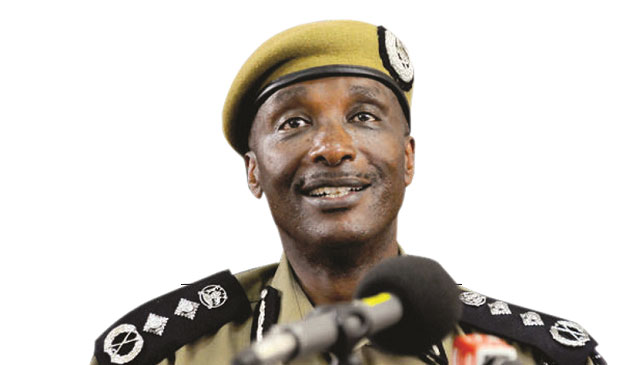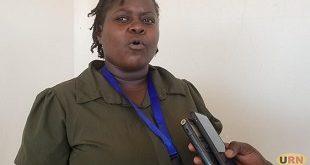
Video evidence quagmire
Apart from the confessions, insiders say, police is also building its case based on testimonies of eye witnesses. Some of the testimonies are backed by photographs and video evidence.
One of Kayihura’s main pieces of evidence, it has emerged, is a video of the Kaweesi killing incident that was recorded by someone in the area. This person later handed the video to police.
According to a source that has seen the video, it lasts about 6 minutes long, and shows the attackers were on two motorbikes as different eye-witnesses had revealed. It also shows that while the assailants came riding on two motorbikes; two on each, after the murder, three left on one motorbike and the other one, on one.
The video is the closest thing police has, as far as identifying the attackers is concerned. However, the problem is that the video was shot from a distance and, from it, the attackers cannot be identified – for now. And the more one zooms, the more blurry it gets.
Insider sources intimated that police is trying to acquire software that can improve the video and make it possible to identify the characters in it.
The main problem for Kayihura, however, is that he needs to find the so-called `smoking gun’ – some sort of undeniable conclusive evidence. This is mainly because every piece of evidence the police has come up with is being disputed as either concocted or procured under duress from alleged suspects.
One such piece of evidence regards the theory that Kayihura is working with, that Kaweesi was bumped off by anti-government fighters of the Allied Democratic Forces (ADF).
Informed sources familiar with the investigations have told The Independent that Kayihura, in fact, has some of the evidence he needs to go with this lead to court.
But at the heart of that evidence are confessions from suspects, testimonies from witnesses, all of which could crumble in court if they were procured under duress from Nalufenya or other torture chamber. The rest of the evidence is data and forensics analysis.
From this evidence, the police have linked the killers to the ADF and believe Kaweesi was “a target of opportunity”. In military parlance, a target of opportunity is that which is unplanned and which is attacked upon favorable presentation or unexpected discovery or appearance.
Insiders say before Kaweesi’s murder, government had acquired intelligence that the ADF were planning to assassinated top, influential persons in Uganda to cause a sense of insecurity.
The key targets on the hit list, according to this intelligence, were the police chief Kayihura himself, President Yoweri Museveni’s son, Maj.Gen Muhoozi Kainerugaba, and Frank Tumwebaze, the Minister of Information.
Assassinating these officials, the theory goes, would dismantle the government’s centre of gravity, which is security, by creating a sense that the government is incapable of protecting lives and property. As a result, this would create a sense of instability which the ADF would exploit further.
But all these, the theory goes; the main targets were hard to get. Kaweesi, on the other hand, was not hard as he lived in lowly Kulambiro; which is a fairly unsafe side of Kampala city, had developed a clear routine and was lightly protected yet killing him would create as much an impact as killing any of the main targets.
Sources in police say Kaweesi’s killers trailed him for three months. During the course of this time, they confirmed that every morning, his car always first dropped his children to school and returned for him at about 9am and that he only moved with one escort.
Indeed, on the morning Kaweesi was killed his car first dropped his children to school and then returned to pick him from his home at 9am.
The same attackers, intelligence revealed, had tried to target Kayihura and found that he had very irregular movements, travelled in an armored vehicle and was escorted by two pickups with police officers with bullet proof vests and automatic rifles.
As such, insiders claim, the attackers found it very hard to martial force to take out Gen. Kayihura. They had planned to take out Kayihura during a marathon. The police chief tends to participate in marathons and at one point, police reportedly repulsed attackers who were planning to kill him.
However, even before police goes with this theory and evidence that backs it to court, critics are already punching holes in it.
Many point at how quickly Kayihura was able to know that it was ADF that killed Kaweesi since he made the allegation just days after the murder.
In the past the ADF has been blamed for the killing of prominent people, including Joan Kagezi, then-Deputy Director of Prosecutions at the War Crimes Division of the High Court, who was killed on March 30, 2015 in the same way as Kaweesi. Other prominent cases include that of Maj. Mohammed Kiggundu, and at least 10 Muslim clerics.
Kayihura’s woes have doubled since President Museveni, while addressing mourners at Kaweesi’s on March 19, pointed a finger at police and lambasted other security agencies for failing to do their work. At the time of his killing, Kaweesi was handling several cases involving investigation of some of his colleagues in the police force. That is why some friends and family members of Kaweesi have also made public their suspicions that Kaweesi might have been murdered by fellow top brass in the police.
President Museveni clarified in a statement on his Facebook page on March 19 when he wrote: “I am beginning to find some of these offices redundant and action will be taken if you don’t clean up your conduct.” It is such statements that appear to be putting Kayihura under pressure.
****
editor@independent.co.ug
 The Independent Uganda: You get the Truth we Pay the Price
The Independent Uganda: You get the Truth we Pay the Price



